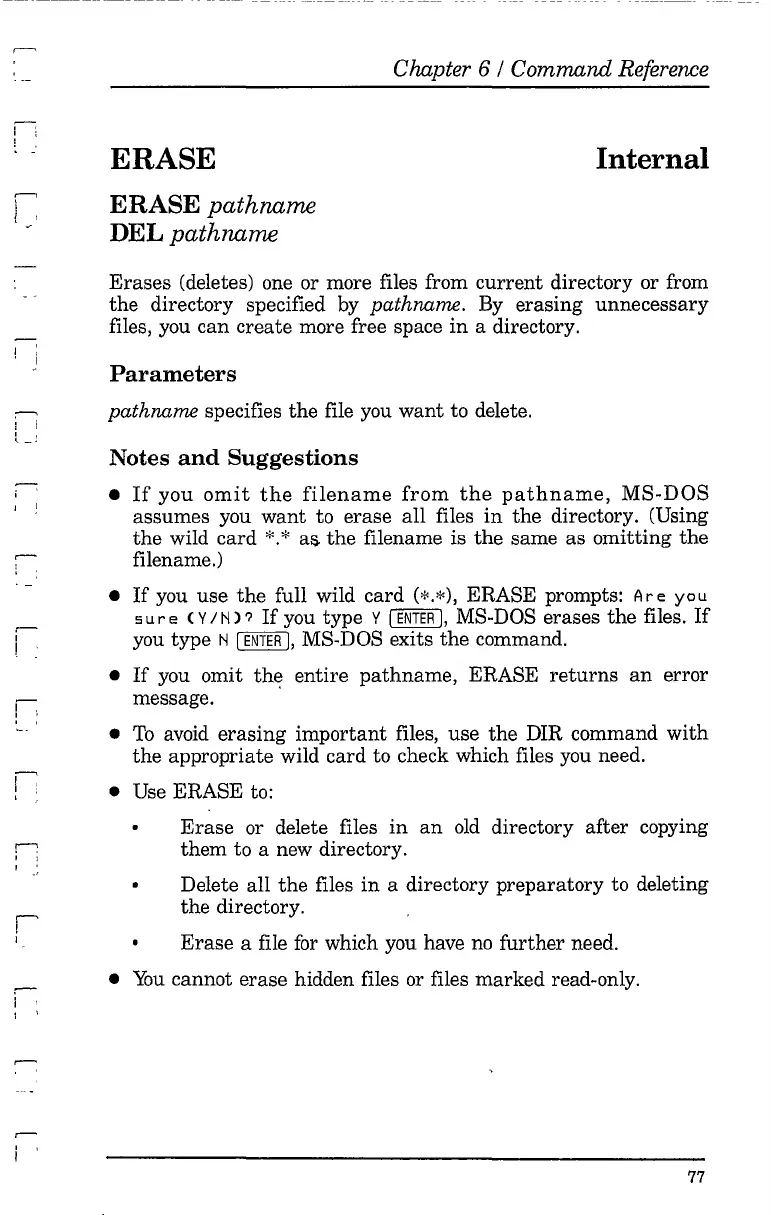I '
i
ERASE
ERASE pathname
DEL pathname
Chapter 6 / Command Reference
Internal
! I
l i
, ,
,
-'
I I
I
I I
I
,
::
,
I
_~
r
I
, '
Erases
(deletes) one or more files from current directory or from
the
directory specified
by
pathname. By erasing unnecessary
files, you can create more free space
in
a directory.
Parameters
pathname specifies
the
file you want to delete.
Notes
and
Suggestions
•
If
you
omit
the
filename
from
the
pathname,
MS-DOS
assumes you want to erase all files
in
the
directory.
CUsing
the
wild card
*.
*
as.
the
filename is
the
same
as
omitting
the
filename.)
•
If
you use
the
full wild card
C*.*),
ERASE prompts:
Are
you
5 u r e
(Y
/ N
)?
If
you type Y I
ENTER
I,
MS-DOS erases
the
files.
If
you type N
[ENTER
I,
MS-DOS exits
the
command.
•
If
you omit
thE!
entire pathname, ERASE
returns
an
error
message.
•
To
avoid
erasing important files, use
the
DIR command
with
the
appropriate wild card to check which files
you
need.
• Use ERASE to:
Erase
or delete files
in
an
old
directory after copying
them to a new directory.
Delete all
the
files
in
a directory preparatory to deleting
the directory.
Erase
a file
for
which you have
no
further need.
•
You
cannot erase hidden files or files marked read-only.
77
